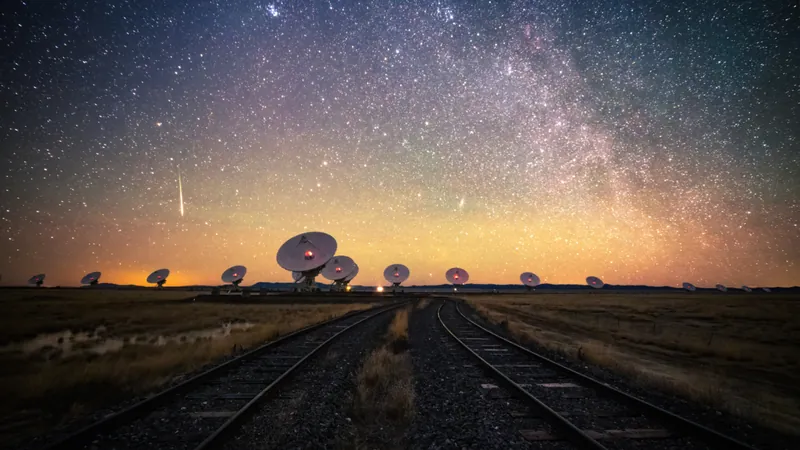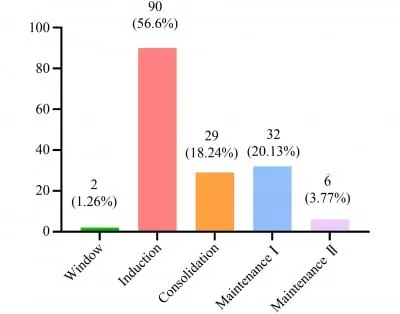
Game-Changer for Astronomy: SpaceX's Bold Move to Shield Radio Telescopes from Satellite Interference!
2025-08-20
Author: Nur
Revolutionizing Radio Astronomy
SpaceX has taken a groundbreaking step by teaming up with U.S. radio astronomers to launch an automated data-sharing system. This innovative technology is designed to safeguard radio telescopes worldwide from the interference caused by satellites in low Earth orbit (LEO).
The Double-Edged Sword of Starlink
While SpaceX's Starlink constellation is delivering high-speed internet access to remote areas, it also casts a shadow on optical and radio telescopes, creating ghostly trails in images and disrupting crucial observations. Astronomers fear that interference from these satellites could obscure signs of extraterrestrial life and drown out faint signals from distant galaxies.
A Perfect Coordination: Real-Time Data Sharing
After three years of research, astronomers from the National Radio Astronomy Observatory (NRAO) have collaborated with SpaceX to develop a sophisticated system that communicates real-time observing schedules to the Starlink satellites. This system empowers satellites to either redirect their signals away from sensitive antennae or mute their electronics during critical observation periods.
Chris De Pree, deputy spectrum manager at NRAO, emphasized the system’s efficiency: "It’s autonomous on both sides. We're sending real-time data to SpaceX, and their satellites adjust accordingly." This seamless interaction drastically reduces interference, allowing for more accurate astronomical observations.
Success in Testing: A Bright Future Ahead
The system has already been tested at the NRAO's Very Large Array (VLA) in New Mexico, known for its monumental contributions to our understanding of cosmic phenomena. Furthermore, additional testing is set to take place at the Very Long Baseline Array and the Green Bank Telescope in West Virginia.
Confronting the Satellite Boom
With over 8,000 operational Starlink satellites and a targeted expansion of 40,000 more in the next decade, the sky is set to become increasingly crowded. Astronomers worry that by 2030, up to 100,000 satellites could clutter Earth’s orbit, significantly hampering radio observations.
Preserving the Cosmic Silence
Historically, radio telescopes have flourished in remote, radio-quiet zones to minimize interference. However, with hundreds of satellites flying over facilities like the VLA daily, astronomers are forced to find innovative solutions. "No place is remote anymore," De Pree noted.
A Call to Action for the Future
The urgency for addressing this interference has prompted NRAO to work proactively with SpaceX since 2021. The hope is that this new data-sharing technology not only aids current observatories but could be embraced by other satellite operators as well. This collaboration represents a beacon of hope, promoting a coexistence between internet-beaming satellites and the vital work of radio astronomy.
Conclusion: A New Era for Astronomy
With the rapid expansion of satellite technology, ensuring the future of radio astronomy is more critical than ever. As SpaceX and astronomers pave the way for a solution, they could set a precedent for how humanity navigates this new aerial frontier, making room for both technological advancement and the wonders of the cosmos.



 Brasil (PT)
Brasil (PT)
 Canada (EN)
Canada (EN)
 Chile (ES)
Chile (ES)
 Česko (CS)
Česko (CS)
 대한민국 (KO)
대한민국 (KO)
 España (ES)
España (ES)
 France (FR)
France (FR)
 Hong Kong (EN)
Hong Kong (EN)
 Italia (IT)
Italia (IT)
 日本 (JA)
日本 (JA)
 Magyarország (HU)
Magyarország (HU)
 Norge (NO)
Norge (NO)
 Polska (PL)
Polska (PL)
 Schweiz (DE)
Schweiz (DE)
 Singapore (EN)
Singapore (EN)
 Sverige (SV)
Sverige (SV)
 Suomi (FI)
Suomi (FI)
 Türkiye (TR)
Türkiye (TR)
 الإمارات العربية المتحدة (AR)
الإمارات العربية المتحدة (AR)